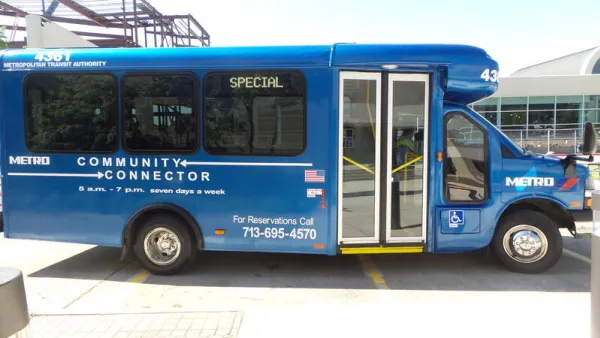On-demand technology has vastly transformed cities by changing everything from the way we shop and travel to how markets target and serve us.

Laura Bliss reflects on what on-demand technology has meant for cities and modern life over the last decade. "Our data as consumers and participants in daily life are not simply passively gathered: Consolidated, it has become the raw material for many of the products and services we buy."
But the reach of data collection extends far beyond just the consumer aspects of our lives. Smart technology tracks people as they move through physical space, public and private, and has raised a slew of questions about how urban spaces should be monitored and policed, notes Bliss.
"[Big data analytics] have also changed the significance of a basic element of what makes [these spaces] urban: dense proximity," says Bliss. Physical conglomeration is no longer a necessity to access goods and services, as companies such as Uber, Airbnb, and Amazon have aptly demonstrated.
And it is this transformation of the urban economy through technology that has been so profound, Bliss points out. "The 2010s were the decade the city became an App Store: an online marketplace where our choices were closely tracked, where that data became part of the products we were using, and where digital clusters of activity displaced real-world transactions."
FULL STORY: How the On-Demand Economy Reshaped Cities

National Parks Layoffs Will Cause Communities to Lose Billions
Thousands of essential park workers were laid off this week, just before the busy spring break season.

Retro-silient?: America’s First “Eco-burb,” The Woodlands Turns 50
A master-planned community north of Houston offers lessons on green infrastructure and resilient design, but falls short of its founder’s lofty affordability and walkability goals.

Delivering for America Plan Will Downgrade Mail Service in at Least 49.5 Percent of Zip Codes
Republican and Democrat lawmakers criticize the plan for its disproportionate negative impact on rural communities.

Test News Post 1
This is a summary

Test News Headline 46
Test for the image on the front page.

Balancing Bombs and Butterflies: How the National Guard Protects a Rare Species
The National Guard at Fort Indiantown Gap uses GIS technology and land management strategies to balance military training with conservation efforts, ensuring the survival of the rare eastern regal fritillary butterfly.
Urban Design for Planners 1: Software Tools
This six-course series explores essential urban design concepts using open source software and equips planners with the tools they need to participate fully in the urban design process.
Planning for Universal Design
Learn the tools for implementing Universal Design in planning regulations.
EMC Planning Group, Inc.
Planetizen
Planetizen
Mpact (formerly Rail~Volution)
Great Falls Development Authority, Inc.
HUDs Office of Policy Development and Research
NYU Wagner Graduate School of Public Service





























